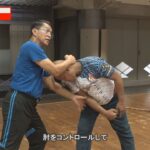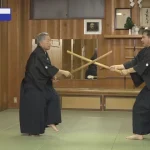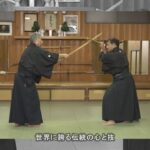Text and Photo by Grigoris A.Miliaresis

Three years ago, in April 2010 I travelled to Japan just for one week; this was an 1 + 12 hour flight with a 5 hour layover in Istanbul and everyone who knows me, knows that I really hate flying. Still, I had to be in Tokyo that April because there was something I really needed to do: attend one of the “Sayonara Koen” performances held by the Kabukiza Theater in Ginza, Tokyo’s theater specializing in Kabuki and one of the city’s landmarks. Shochiku, the company that had been Kabuki’s almost exclusive producer since the late 19th century had decided to tear it down and rebuilt it claiming some well-founded reasons of accessibility, comfort for the actors and anti-seismic protection. This isn’t something new, of course: that Kabukiza was the fourth incarnation of a national Kabuki theater — since its original opening in the end of the Meiji Era (1889) it has been destroyed and rebuilt four times because of a fire, the Great Kanto Earthquake of 1923 and the 1945 bombings. But this was the first time the theater was going to be demolished on purpose and everyone knew exactly when the final countdown would end.

And there was indeed a countdown! When I arrived at the theater that day, a big electronic clock was counting down the days, hours, minutes and even seconds to April 19, the day that the three colored joshiki-maku curtain was going to be drawn for the last time and the day that Ichikawa Danjuro would walk its hanamichi, the path used for entrances and exits on and off the Kabuki stage for the last time as Sukeroku, the “flower of Edo” — it’s a tragic irony that this was going to be the last time Danjuro would ever walk on the Kabukiza hanamichi since he died almost exactly two months before the Fifth Kabukiza opened at exactly the same spot. Still, he was alive and well that day and together with Bando Tamasaburo, Onoe Kikugoro, Nakamura Kanzaburo and tens of other Kabuki greats offered a virtual compendium of the genre and the multitude of arts that create it.

Many of my martial arts friends can’t understand what it is that draws me to Kabuki; especially after that flash trip to Japan, I had people asking me all the time things like “But it’s just overacting in weird makeup”, “It’s stylized to death”, “It’s antiquated” or “Even if for the most part it’s supposed to be about the times of the samurai, the action is laughable”. It’s a shame that it is too hard to explain why Kabuki is interesting to anyone who hasn’t seen it live — like all performing arts, reading about it or even seeing it on video doesn’t do it justice. You need to be there, right in the heart of the heart of Japan and you need to have done some homework to fully appreciate it; even without the homework it is remarkably interesting but if you are missing the context what remains is just the spectacle.
Now here’s the thing. If you take the two last sentences of the paragraph above, replace the word “Kabuki” with the word “budo” (and particularly “kobudo”) and cross off the word “performing” before the word “arts” the statement still makes perfect sense — and this is one of the reasons that I find Kabuki irresistible: it resembles budo in so many ways. Of course there is the fundamental difference that it is a performing art while budo isn’t but even this isn’t a practical difference since many budo (and, again, particularly kobudo) are regularly performed in front of an audience, albeit for different reasons. Still, the similarities I see between Kabuki and budo are far too many and important to ignore and, in my experience there is a considerable number of budoka who would benefit tremendously from a visit to Kabukiza, provided they have done the aforementioned homework and they are vigilant enough to look beyond the spectacular costumes and the bold kumadori makeup.
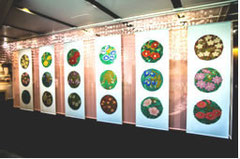
Kabuki is organized in family lineages going back centuries, each with its own distinguishing symbols, particular traditions in everything — from roles, to acting kata to clothing- stage names, rules for how the lineage passes from one generation to the next and guilds that link these families together and form the universe we call “Kabuki”. There are scrolls from time (almost) immemorial with the teachings that each exponent has to study and learn, there is constant training up to the last detail, there are sempai and kohai relationships and there are relations (and feuds!) formed along the ages these organizations have been in existence. Furthermore there is this incredibly fine balance that must be kept, between fossilization at one extreme and hyper-modernization at the other; the word for this balance is “tradition” in its truest form. Kata are revered but also reviewed, practices are respected but also re-evaluated and customs are upheld but also updated, all in an effort to keep the art alive because, despite the fame and money it brings to its current exponents its essence isn’t really theirs to keep — it is a flow that hasn’t stopped since that day in 1603 when Izumo no Okuni climbed down the dried up bed of the Kamo River in Kyoto and gave her first multi-discipline performance.
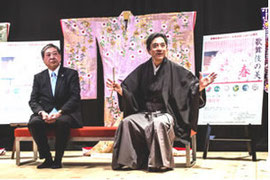
Now, and in all honesty, what of the above doesn’t hold true for budo — at least for any budo worth its salt? From the sartorial details (let’s face it: how many Japanese outside the worlds of budo and kabuki get to wear so often a montsuki and a striped hakama in any other occasion other than their wedding — and that, only if they decide to marry at a Shinto shrine?) to the arcane language sometimes undecipherable to anyone but priests and history professors, to the full immersion into the minutiae of past times, there are parallels that you must be really oblivious to overlook. These two worlds are true guardians of Japanese traditions that would have been lost otherwise and I wonder if people really appreciate it. Do you want another example? How many people know how to wear a suit of armor and know how to actually move in it? (You could argue that all actors do but film and TV actors have the luxury of crying “cut!” when something goes wrong but you can’t do that on the Kabuki stage or in a budo enbu)
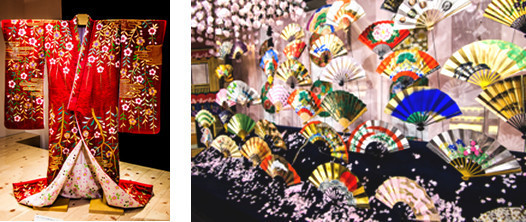
Parenthetically, I was thinking about this recently when I went to the Yoshiwara Oiran Parade in Asakusa. While watching the girl playing the oiran do her characteristic soto hachi moji walk it struck me that probably the only people alive who know how to do this walk nowadays are the Kabuki onnagata! If it wasn’t for Kabuki this element of Japanese history would have been lost — and it wouldn’t have been the only one. In the same vein our collective knowledge of Japanese swords would have been tragically lacking if it wasn’t for all those swordsmen of the kobudo ryuha who train with them day, after year, after century. Japan’s history itself is written in the densho of these traditions and it would be a crime not to acknowledge their contribution in keeping this history alive and sharing it with, practically, everyone.

I started with the old Kabukiza but I want to finish with the new. True to its word, Shochiku brought us the Fifth Kabukiza on schedule and this April, the countdown clock reappeared outside the new theater; the difference was that whereas its predecessor was counting the days, hours, minutes and seconds to a sad event, this one was performing the same function to a joyful one: the theater was going to open and life in Ginza would return to normal (to all fairness, Shinbashi Enbujo a few hundred meters down the road did its best to function as Tokyo’s “Kabuki Central” but I’m sure most will agree with me that it wasn’t the same). If three years ago I was willing to cross Asia to be there and bid farewell to the Fourth, it goes without saying that this time I wouldn’t mind jumping a couple of trains to welcome the Fifth! My tickets were in place, my camera fully charged and in the morning of April 7, three years minus one week later, I was standing at the exact same spot.

I won’t get into details about the building itself — info about that is available in hundreds of other places, especially if you can read Japanese. Suffice to say that the Fifth Kabukiza is the same as the Fourth but better; not just because it is brand new nor because Shochiku has gone into great lengths to add value by modernizing it with escalators, mini-screens offering real time explanation as the plays evolve and extra features like the Kabukiza Gallery in the high-rise behind it. All these play an important part but there is something more: it is as if the whole block has been permeated with the spirit of Kabuki, starting from the completely revamped Higashi Ginza station underneath it and its bustling marketplace echoing how the theater district looked back in the days of the Nakamuraza, the Ichimuraza and the Moritaza and ending in the actors haunts in the small alleys behind it.
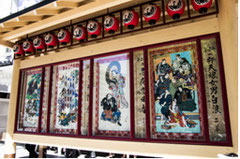
The performances in the “Shin Kaiba Kokera Otoshi” the inaugural shows were, as expected, magnificent. My ticket was for the afternoon part consisting of the very popular pair “Benten Musume Meo no Shiranami” (aka “Benten Kozo”) and “Shinobi Yoru Koi no Kusemon” (aka “Masakado”) and featuring a lineup including Onoe Kikugoro, Nakamura Kichiemon, Nakamura Baigyoku, Bando Mitsugoro, Matsumoto Koshiro and Bando Tamasaburo; by Kabuki standards this is almost as close as you can get to an “All Star” team. And oddly enough both plays include a tachimawari fighting scene, the kind that makes my budo friends furious since they are not “realistic”. And yes they aren’t but if we really get down to it is any kind of theatrical fighting realistic? Even the most historically accurate period dramas (I won’t even get into chambara!) allow for some artistic license — to the extent that most people taking up iaido are surprised that unsheathing the sword is so quiet because missing is the swishing sound from the cinematic draws.
For me the tachimawari — like everything else happening on the Kabuki stage- is an exercise in precision, spatial awareness and balance between the acrobatic action of the extras and the composed presence of the protagonist. Especially in the “Gokurakuji Yane Rippuku” scene were the tachimawari takes place on a tilted rooftop and at a considerable height, Kikugoro’s execution was superb; if we also take into account the fact that this is a 71-year old man, it borders on the superhuman! The same is more or less true about Tamasaburo’s tachimawari in “Masakado”: again we have a 63 year-old man dressed in probably the most uncomfortable woman’s costume in world history, that of a high-rank courtesan, who must face multiple opponents armed with spears and manage to fend them off by moving constantly while keeping the poise appropriate for a princess. And he does it much better than any other 63-year old — then again, Tamasaburo is not “any other 63-year old”.
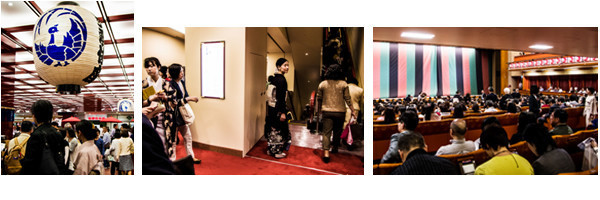
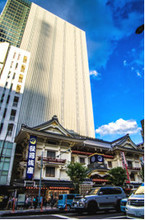
The walls of Masakado’s castle tumbled with Tamasaburo/Takiyasha unfurling his banner next to the magical giant frog and the performance was over, as is this account of my visit in the bewitching world of Kabuki. Allow me to leave you with a parting thought, though: in the Greek language, the endeavors that fall outside the domains of work and fiscal gain or education in its strict sense, but are performed or witnessed for entertainment purposes are collectively called “psychagogia” (ψυχαγωγία) and are usually rendered in English as “entertainment”, “amusement” or “recreation”. But there’s a very important linguistic differentiation here: in its correct usage, “psychagogia” is not just lying on a couch and watching a DVD; the word is a composite consisting of the words “psychi” (ψυχή) meaning “soul” and “agogi” (αγωγή) meaning “cultivation”, “education” or “leading”.
Thus in the literal sense, when we call something “psychagogia” we take it to mean that this activity instructs and nurtures the soul; we could, by the way add a more poetic tint to the word considering that “psychi”, the word for “soul” literally means “butterfly” so we can take “psychagogia” to mean something that makes this soul-butterfly actually fly. For me, Kabuki and budo are the perfect manifestations of this ideal of “psychagogia”: they are endeavors that cultivate our inner self and help it rise to new heights. Even if we forget for a while their incalculable value as vessels for Japan’s past, this aspect alone would be enough to regard them as vehicles leading to its future.
 About the author
About the author
Grigoris Miliaresis has been practicing Japanese martial arts since 1986. He has dan grades in judo, aikido and iaido and has translated in Greek over 30 martial arts’ books including Jigoro Kano’s “Kodokan Judo”, Yagyu Munenori’s “The Life-Giving Sword”, Miyamoto Musashi’s “Book of Five Rings”, Takuan Shoho’s “The Unfettered Mind” and Donn Draeger’s “Martial Arts and Ways of Japan” trilogy. Since 2007 his practice has been exclusively in classic schools: Tenshin Buko-ryu Heiho under Ellis Amdur in Greece and Kent Sorensen in Japan and, since 2016, Ono-ha Itto-ryu under 17th headmaster Sasamori Takemi and 18th headmaster Yabuki Yuji.
http://about.me/grigorismiliaresis







